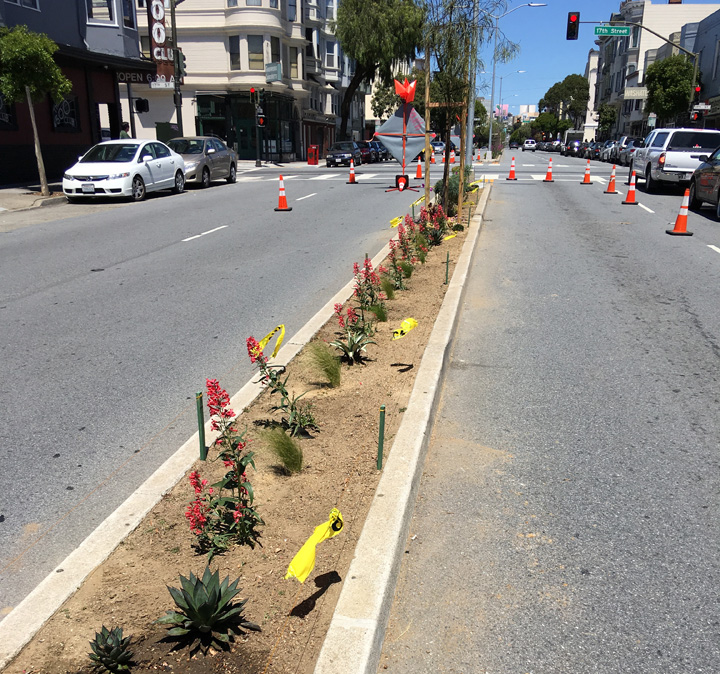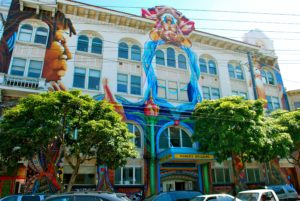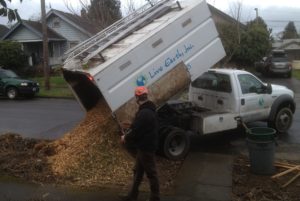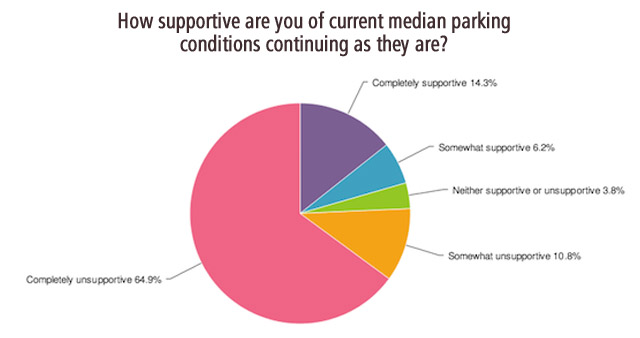
MANY OF US WILL REMEMBER—not that long ago—that the Guerrero St. median all the way from Cesar Chavez St. to Market St. was a nondescript, lifeless concrete strip. Today, nearly the entire stretch has been planted through an greening initiative kickstarted by Gillian Gilett, who conceived it primarily as a traffic-calming measure.
While the city has foot the majority of the bill for removing concrete, soil prep, and plants and materials, DPW’s Bureau of Urban Forestry emphasizes that it can plant and maintain the median only with the help of engaged residents. The reality has been disappointing. While there has been enthusiastic support on most blocks for the planting, maintaining the plantings has been another story. Nearly all the median blocks look neglected. MDNA hopes to change that, setting an example for other blocks to emulate, by adopting the median from 17th to 18th Streets.

To kick things off, we sponsored a median greening day on Saturday, April 2 from 8:30 am to 1 pm. Fifteen volunteers participated and Tartine Bakery and Bi-Rite Market generously contributed pastries and fresh fruit—fun and camaraderie were had by all. Three Sundays later, four of us got together to complete the work. In both cases, We couldn’t have done it without DPW’s Bureau of Urban Forestry, which coned off the inner lanes on both sides of the block so we could work safely, and helped us accomplish the following :
- Remove all weeds and trash.
- Plant over 100 new plants (Euphorbia, Penstamon varieties, Agave varieties, Salvia, Armeria, Lavender, Society Garlic, and California Poppy).
- Replace dead, damaged, or missing trees. More than half were destroyed last year when a car plowed thru the median! Also, we lost one tree in March, when an elderly driver suffered a heart attack and drove over the median.
- Re-stake several very young Willow Acacia trees to ensure good upright growth.
- Install wood stakes and orange tape around the perimeter of the median to discourage jaywalking and trampling of the plants.

As I post this, some three months after the initial planting, the median is looking great and the vast majority of the plants are doing well and growing. DPW has committed to watering once a week for a total of two years. Although once a week is enough when temperatures are cool, when it’s hot, once a week is not enough while the plants are getting established. Generous neighbors have made their water supply accessible, and one neighbor on Guerrero, in particular, has begun watering the median once more per week with a clever system consisting of a 33 gallon trashcan on his truck and a pump, allowing him to slowly drive down the street with his hazard lights on and water all the plants. This is essentially how DPW does it.
Interested in helping us on 17th to 18th or helping to spruce up and maintain other blocks?
Interesting in helping to maintain other blocks on the Guerrero median? They really need help. If you would like help maintain other parts of the median from 14th St. to 20th in the Mission Dolores Neighborhood, let me know. Although we have adopted just one block, we encourage residents along other parts of the median to do the same. For more info, contact MDNA Greening Coordinator, Gideon Kramer at gykramer1@gmail.com. Contact me as well if you’re interested in being on the email list for alerts about our our periodic maintenance days on our adopted block.




 MEDIAN PARKING ON DOLORES AND GUERRERO HAS ALWAYS BEEN ILLEGAL, but the SF Metropolitan Transit Authority (SFMTA), which is in charge of parking regulation and enforcement, has looked the other way for decades. While the official word is that this practice has been tolerated to accommodate the neighborhood’s faith-based organizations, in reality, the vast majority of parkers in recent years are there not to attend services, but to avail themselves of Dolores Park and other local amenities. The parking is a great convenience for many but a source of considerable unhappiness among most local residents. As the Mission Dolores Neighborhood has become increasingly popular, so have the traffic congestion and safety issues associated with turning these two-lane thoroughfares into a single-lane gauntlet.
MEDIAN PARKING ON DOLORES AND GUERRERO HAS ALWAYS BEEN ILLEGAL, but the SF Metropolitan Transit Authority (SFMTA), which is in charge of parking regulation and enforcement, has looked the other way for decades. While the official word is that this practice has been tolerated to accommodate the neighborhood’s faith-based organizations, in reality, the vast majority of parkers in recent years are there not to attend services, but to avail themselves of Dolores Park and other local amenities. The parking is a great convenience for many but a source of considerable unhappiness among most local residents. As the Mission Dolores Neighborhood has become increasingly popular, so have the traffic congestion and safety issues associated with turning these two-lane thoroughfares into a single-lane gauntlet.


